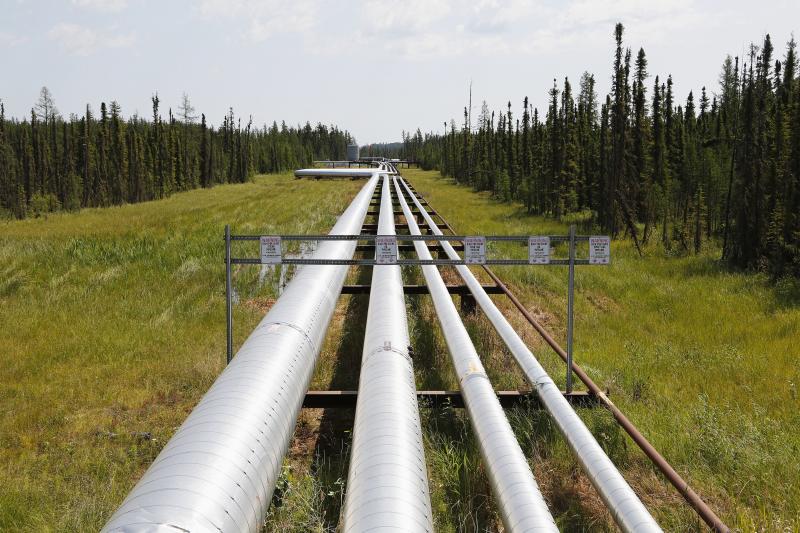RIO DE JANEIRO, BRAZIL – Vaca Muerta has one of the most important reservoirs in the world. But no work is being done to allow this production to reach the rest of the country and its ports.
Argentina is suffering from an increase in energy prices as a result of the Russian invasion of Ukraine. The price of liquefied natural gas (LNG), which is transported in ships, is rising inexorably. This energy, which the country buys in winter, could cost seven times more in May 2022 than in 2021.
Of the US$1 billion spent on foreign gas purchases in 2021, it could be about US$7 billion now if the upward trend in oil and gas due to the conflict in Ukraine continues.

Why is the country buying imported gas when it owns Vaca Muerta, one of the most important gas reserves in the world? The answer lies in the fact that the various administrations are focusing on developing domestic gas.
“There are six times more reserves in Vaca Muerta than the total gas demand for the next 20 years,” Marcos Bulgheroni, CEO of Pan American Energy (PAE), said in a presentation. This fact is confirmed by dozens of experts, international companies, and energy consultants.
However, most of the gas in Vaca Muerta cannot be transported away. That is, once it is extracted, the producers have no way of piping it to the rest of the country or the world. So it is a kind of bottleneck.
Energy projects usually have a medium- and long-term return on investment. But local governments tend to look at very immediate results. And that has consequences.
Argentina pays the national companies that produce the gas at Vaca Muerta a price of US$3.50. When it comes to imports, on the other hand, it pays twice as much (an average of US$8 in 2021). Since the beginning of 2022, it has been more than 20 US dollars. And since the Ukraine conflict, it has not dropped below US$50.
Argentina consumes 84% of the gas produced domestically and imports 16%. Of the foreign quota, LNG accounts for nearly 60%. In winter, foreign gas accounts for 27% of consumption. From May to August, the country buys imported energy.
Kirchnerism during the government of Cristina Fernández de Kirchner was the driving force behind the purchase of a record US$51 billion in foreign gas.
Mauricio Macri’s government promoted the production of domestic gas, recognizing a higher price than the international price. However, in the last year of his term, changes were made to the “price” of Vaca Muerta gas that altered the program. The program was criticized by the Kirchnerist opposition, which considered it too benevolent toward the companies.
The country had been importing LNG through two terminals: Escobar and Bahía Blanca. The Cambiemos government dismissed the import ship that was in Bahía Blanca. Instead, YPF established its own LNG export operation there in cooperation with a foreign company.
The government of Alberto Fernández canceled this export operation. It canceled the LNG export contract at Bahía Blanca and reopened the terminal to imports.
The previous government also proposed to solve the gas export problem – the problems of getting gas from Neuquén to the rest of the country – by bidding for a central gas pipeline. This proposal was made by Gustavo Lopetegui, Macri’s last energy minister, toward the end of Mauricio Macri’s term.
The current government did not promote this tender process. Now it has revived it with amendments and is defending it tooth and nail. But this pipeline might not be ready – hopefully – until next winter. In the next cold months (between May and August) it will be necessary to resort to foreign gas.
In March 2020, when the COVID-19 pandemic began, energy prices collapsed. There was a day when oil prices were negative: Oil companies had to pay (rather than collect) for someone to hold their product for them. Argentina resumed imports, knowing that the price of imported gas was cheap.
There was also a conceptual difference between Cambiemos and Kirchnerism. Mauricio Macri wanted the gas bill to cover most of the cost of gas (he planned to cover 66% in 2019), while Cristina Fernández de Kirchner (in 2015) introduced a gas tariff that covered 7% of the cost.
The problems with imported gas also affect electricity costs. When electricity producers do not have gas, they have to resort to imported liquid fuels. This approach is also very costly, leads to dollar outflows, and prevents potential tax savings that would have been achieved with more local gas.
“In 2021, the cost overrun (or potential savings) of the natural gas system is US$2066 million, compared to US$642 million in 2020 and US$1041 million in 2019, half of which is due to the use of liquid fuels for electricity generation,” said former Energy Minister Juan José Aranguren.
With information from Clarins

